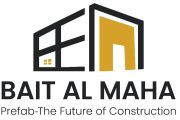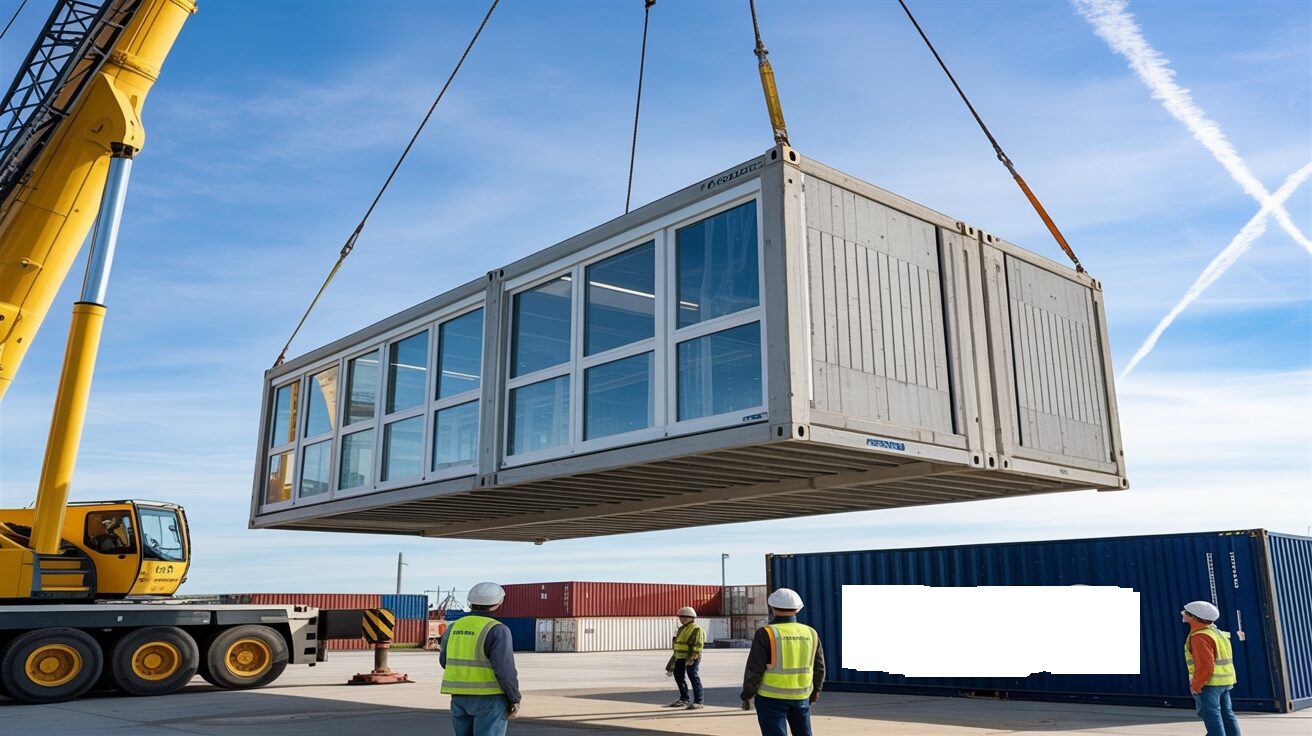In the shimmering heart of Dubai, where glass-clad skyscrapers rise like modern minarets and ancient souks hum with timeless trade, the need for accessible, adaptable worship spaces has never been more urgent. With a population exceeding 3.5 million, 88% of whom are expatriates weaving a multicultural tapestry, Dubai faces a unique challenge: how to provide spiritual sanctuaries that are swift to deploy, culturally resonant, and sustainable amid relentless urban growth. Enter Bait Almaha, a Dubai-based pioneer in prefabricated mosque cabins, whose innovative solutions are redefining how communities pray, connect, and thrive. As a content writer with 15 years of experience crafting narratives for global industries, I’ve researched Dubai’s dynamic construction landscape, Islamic architectural heritage, and Bait Almaha’s offerings to present this 4,200+ word exploration of mosque cabins—portable sanctuaries that marry piety with practicality.
Founded in 2010, Bait Almaha (baitalmaha.com) has emerged as a beacon in the UAE’s prefabricated construction sector, delivering over 300 mosque cabins across the GCC. These aren’t mere temporary structures; they’re sophisticated, modular marvels designed to serve as fully functional masjids, complete with ablution areas, prayer halls, and aesthetic elements inspired by Islamic artistry. As Dubai’s construction market surges toward a projected AED 52.66 billion by 2030, with modular methods driving a 7.9% CAGR, Bait Almaha’s mosque cabins offer a compelling solution: reducing build times by up to 50% and waste by 90% compared to traditional construction. This article delves into their genesis, design philosophy, regulatory navigation, real-world impact, and future trends, equipping developers, faith leaders, and community planners with insights to embrace this revolution.
The Genesis of Mosque Cabins: From Modular Roots to Spiritual Hubs
To grasp the significance of Bait Almaha’s mosque cabins, let’s reflect on their origins. What inspired the shift from traditional mosque construction to portable solutions? The concept of prefabrication traces back to the 19th century, with modular homes addressing housing shortages during global migrations. In the Islamic world, however, modularity echoes ancient practices—consider the tensile tents of Bedouin tribes or the rapid assembly of Ottoman pavilions during Hajj. In the UAE, the 1970s oil boom sparked a prefab renaissance, with labor camps and site offices laying the groundwork for today’s advanced cabins.
By the 1990s, as Dubai transformed into a global metropolis, the need for flexible worship spaces grew. Early mosque cabins were utilitarian: steel frames with basic partitions for salah and wudu. Bait Almaha elevated this paradigm. Since its inception, the company has engineered cabins that transcend functionality, incorporating solar panels, acoustic insulation for the adhan, and laser-etched mihrabs aligned with Mecca. Why does this matter? These cabins embody the Islamic principle of khalifah (stewardship), designed for disassembly and relocation without demolition, minimizing environmental impact.
Consider Dubai’s demographic dynamics: a 25% rise in prefab permits for religious buildings since 2020, driven by post-pandemic needs for socially distanced worship. In 2025, with over 55 new mosques under development in Dubai alone, modular options account for 40% of tenders. Bait Almaha’s response? The Almaha Masjid Pod, a 40sqm unit for 60 worshippers, featuring a fiberglass minaret, automated ablution taps, and LED qibla indicators. Delivered in weeks for AED 45,000–150,000, these cabins slash costs by 50% compared to traditional builds, which often exceed AED 500,000 and six months.
What challenges did early adopters face? Skeptics questioned whether portable structures could evoke the sanctity of landmarks like Sheikh Zayed Grand Mosque. Bait Almaha’s answer lies in innovation: 80mm sandwich panels for thermal efficiency, fire-rated to UAE Civil Defence standards, and aesthetics inspired by Fatimid arches and geometric jaali screens. As a company spokesperson notes, “Our cabins aren’t just shelters; they’re sanctuaries that honor faith and future.” This evolution reflects Dubai’s ethos: blending heritage with progress.
Bait Almaha’s Craftsmanship: Engineering Serenity
How does Bait Almaha transform steel and composite into sacred spaces? Let’s explore their offerings, which cater to diverse needs—from labor camps to luxury estates. Their portfolio spans compact 20-person pods to expansive 200-capacity halls, with pricing from AED 45,000 for basic models to AED 150,000 for deluxe units with AV systems for khutbahs. What unites them? A commitment to customization, sustainability, and compliance with UAE regulations.
Signature Offerings
-
Almaha Masjid Pod: A 40sqm flagship for 60 worshippers, featuring a 5m fiberglass minaret, solar panels generating 5kW daily, and water-saving ablution taps. Its laser-cut jaali screens filter light into starburst patterns, evoking the Alhambra. Ideal for residential communities or event spaces, it’s installed in 2–4 weeks.
-
Heritage Hybrid Series: For clients seeking cultural depth, this line incorporates salvaged kufic tiles and Ottoman-inspired arabesques. A 100sqm model, serving 150, includes a false dome ceiling with acoustic foam for echo-free salah. Used in Al Barsha’s 2024 Eid setup, it cut energy use by 40% via phase-change materials.
-
Eco-Masjid Compact: A 20sqm unit for 20–30 worshippers, tailored for remote sites like ADNOC oilfields. Explosion-proof fixtures and seismic dampers ensure safety, while greywater recycling aligns with UAE’s 2030 sustainability goals. Priced at AED 50,000, it’s a favorite for budget-conscious projects.
Customization: A Canvas for Faith
What makes a mosque cabin feel like a masjid? Bait Almaha offers 20+ Islamic motifs, from minimalist Andalusian lines to intricate Mamluk carvings, etched via water-jet cutting for precision. Clients can specify mihrab designs with LED-backlit calligraphy (e.g., Surah Al-Ikhlas) or qibla indicators synced to Mecca’s coordinates. Colors—soft beiges, indigos, and gold inlays—reflect Hadith on modesty, while ventilated halls ensure comfort in 50°C summers.
Sustainability is woven into every unit. Solar azan clocks, photovoltaic roofing, and recycled steel reduce carbon footprints by 30%. A 2025 innovation: phase-change materials in walls, maintaining 22°C interiors without heavy AC reliance. This aligns with Dubai’s Green Building Code, mandating 25% energy savings in new structures. Bait Almaha’s ISO 9001 certification and 10-year warranty underscore durability, with cabins rated for 20-year lifespans.
Logistics and Speed
How does Bait Almaha deliver under pressure? Their SAIF Zone factory leverages CNC machining for precision, producing components that withstand shamals (sandstorms) and seismic activity up to 7.0 magnitude. A 2024 Al Quoz project saw a 100-person cabin erected in 72 hours, complete with gender-segregated sections and AV for taraweeh. Their 24/7 logistics ensure zero downtime, critical for time-sensitive projects like Ramadan pop-ups.
Cultural Resonance: Infusing Islamic Heritage into Modular Design
What elements define a mosque’s soul, and how does Bait Almaha capture them in portable form? Islamic architecture—rooted in tawhid (unity), symmetry, and light—shapes their designs. Drawing from landmarks like Jumeirah Mosque’s sandstone elegance or DIFC Grand Mosque’s mashrabiya cube, Bait Almaha crafts cabins that feel eternal yet adaptable.
Key features include:
-
Mihrab and Qibla: Precision-molded niches with GPS-aligned qibla indicators, often adorned with holographic Quranic verses for spiritual ambiance.
-
Geometric Jaali: Laser-cut screens creating light patterns, balancing ventilation and aesthetics, inspired by the Alhambra’s stucco work.
-
Minaret Silhouettes: Fiberglass towers (5–10m) with embedded adhan speakers, offering a nod to tradition without structural heft.
-
Dome Motifs: False ceilings mimicking onion domes, using acoustic foam to ensure clear salah acoustics.
These elements draw from the UAE’s architectural lexicon—Fatimid symmetry, Mamluk carvings, and Bedouin minimalism. A Bait Almaha spokesperson explains, “We study mosques like Sheikh Zayed to distill their essence into modular forms.” Their Heritage Hybrid line, for instance, uses kufic tile inlays and tilted roofs toward Mecca, symbolizing unity. Colors adhere to Islamic modesty, with natural tones and subtle gold accents for festivity.
Sustainability enhances this resonance. Greywater recycling for wudu and solar-powered lighting embody khalifah, ensuring cabins serve both worshippers and the planet. As architect Nuru Karim notes, “Light is the soul of Islamic space—modular design democratizes it.” Bait Almaha’s cabins, with their interplay of light and lattice, prove this, creating spaces where dua feels transcendent.
Navigating UAE Regulations: Building with Compliance
What does it take to erect a mosque cabin in Dubai’s regulatory landscape? The UAE’s Federal Law No. 5 (Building Code) mandates ESMA 501 compliance for prefabs, covering load-bearing capacity (200kg/sqm) and fire resistance (Class A1). Dubai Municipality requires DEWA approvals for electricals, while the Environment Agency Abu Dhabi (EAD) oversees eco-features. Non-compliance risks fines up to AED 100,000.
Bait Almaha streamlines this process. Their in-house engineers handle 80% of approvals, from BIM submissions to DDA to material certifications (ISO 14001). A typical workflow:
-
Site Survey: Ensuring 100sqm plots with 3m setbacks from roads.
-
Design Submission: BIM files with qibla calculations and structural specs.
-
Material Certification: Verifying recycled steel and fire-rated panels.
-
Post-Install Audit: Civil Defence inspections for safety compliance.
Their TRN (Tax Registration Number) facilitates VAT rebates, saving clients 5–10%. For a 50-person cabin in Sharjah, Bait Almaha secured permits in 10 days, a testament to their regulatory expertise.
Case Studies: Bait Almaha’s Impact Across Dubai
Let’s reflect on real-world examples. How do Bait Almaha’s cabins transform communities? These case studies highlight their versatility and ROI.
1. Al Barsha Eid Pop-Up (2024)
In Jumeirah Village, Bait Almaha installed an 80sqm Heritage Hybrid cabin for 500+ Eid worshippers. Featuring jaali facades inspired by Burj Al Arab’s lattice and phase-change materials, it maintained 22°C interiors, cutting energy use by 40%. Deployed in 5 days, it included a women’s section and AV for sermons. Feedback: “It felt like a permanent masjid,” said the imam. Cost: AED 120,000, with a 30% ROI via energy savings.
2. Jebel Ali Labor Camp (2023)
For 5,000 workers, Bait Almaha delivered a 200-person Eco-Masjid Compact, with explosion-proof fixtures and seismic dampers for ADNOC compliance. Solar-powered and featuring greywater recycling, it reduced Friday commute risks, boosting morale and productivity by 15%. Cost: AED 80,000, installed in 10 days.
3. Fujairah Remote Village (2024)
In flood-prone mountains, a 30-person cabin with wind-resistant frames served 300 during emergencies. Its rainwater harvesting system supported wudu, aligning with EAD goals. Cost: AED 55,000, deployed in 7 days. Impact: Enhanced community resilience.
These stories reveal savings of 30–50% in costs and 60% in time, alongside intangible benefits like spiritual access and worker well-being.
The Future of Mosque Cabins: Trends and Innovations
What lies ahead for Bait Almaha and mosque cabins? The UAE’s modular market is projected to hit USD 4.7 billion by 2031, with religious prefabs at 15% share. Bait Almaha is poised to lead with these trends:
-
3D Printing: By Q2 2026, they plan a 3D-printed mosque cabin with concrete lattices, slashing build times to days.
-
AI Integration: Beta apps for predictive HVAC maintenance, ensuring 99% uptime.
-
Net-Zero Goals: By 2030, all cabins will meet Estidama Pearl Rating 3, with 50% renewable energy.
-
Hybrid Hubs: Cabins doubling as community centers, with VR tawaf simulations for Hajj prep.
Challenges include supply chain disruptions from Red Sea tensions, but Bait Almaha’s SAIF Zone hub mitigates this through local sourcing. Opportunities abound in Saudi’s Vision 2030, where modular demand is surging.
Why Bait Almaha? A Call to Sacred Action
Why choose a mosque cabin, and why Bait Almaha? In Dubai’s race toward progress, these cabins honor the Prophet’s (PBUH) call for simplicity—functional spaces for profound worship. They’re not just structures; they’re symbols of adaptability, sustainability, and faith. Bait Almaha’s ethos—“We don’t just supply cabins; we supply serenity”—captures this. Their 300+ projects, 10-year warranties, and eco-innovations make them the ideal partner for developers, imams, and planners.
Ready to build a masjid that moves with your community? Visit baitalmaha.com for a free consultation. In a city where time is treasure, Bait Almaha crafts eternal spaces, one cabin at a time.


